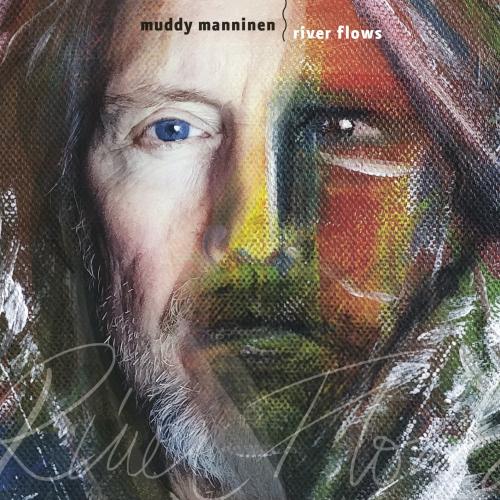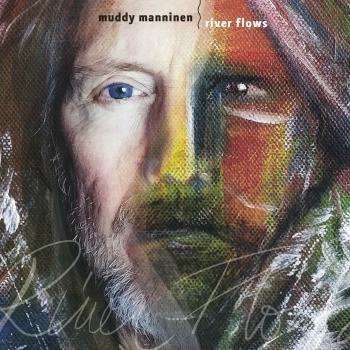
River Flows Muddy Manninen
Album Info
Album Veröffentlichung:
2020
HRA-Veröffentlichung:
23.10.2020
Das Album enthält Albumcover
- 1 Make Believe 04:09
- 2 Hey You 03:49
- 3 Daytona Beach 05:48
- 4 (Don´t Let Them Put the) Hoochie on You 04:44
- 5 Take These Blues from Me 05:44
- 6 Last One to Know 04:36
- 7 The Wedge 04:34
- 8 Money 04:45
- 9 The River 04:22
- 10 River Flows 05:36
Info zu River Flows
Humble guitar hero and his coterie of kindred spirits go for the pulsing jugular and the stylistic estuary.
“Ice melting, rivers flow”: here’s a line from “Being One” – one of the songs Jyrki Manninen co-wrote for his last album with WISHBONE ASH – which best summarizes the shift from the Finnish artist’s solo debut to his sophomore effort, and the shift from plural impression of the veteran’s creative force to a singular stance, too. Yet while solitude may seem to be oozing out of Muddy’s second record’s title track, the instrumental not only serves as its gloriously dramatic finale but also emerges out of the exquisite “River” – so passionately voiced by Melanie Denard to stress that this album is all about the groove and the tone: hence another shift – from "Long Player"‘s monochrome cover to a new set’s colorful artwork. The shift reflecting the music inside.
The groove can be simple – that’s why Simon Kirke, who always plays for the song, is a perfect driver for opener “Make Believe” where riffs are infectious – but the tone feels rich throughout, in terms of both sound and sentiment, as Manninen marries bluesy vibe to rock ‘n’ roll uplift and just the right amount of fingers-wrought filigree. There’s no highbrow philosophy now, so “Hey You” doesn’t beat around the bush when Kev Moore’s sarcastic croak addresses social inertia and Muddy’s lap steel gets sprinkled with funky licks for enhanced grittiness of the tuneful drift, yet the wah-wah-washed strings become sparse once the same singer lays down the record’s primal lyrical cut, the velveteen “Daytona Beach” – a breezy and humid ballad which should set the mood for the more traditional moves.
As a result, the slow folk song “Take These Blues From Me” and swampy mid-tempo stomper “(Don’t Let Them Put The) Hoochie On You” balance each other in quite an elegant manner, the former seeing Manninen whip up harmonies as a guitarist and a vocalist, before Gregg Sutton reclaims “Last One To Know” from Joe Cocker and lets Muddy pour twangy magic over this communal singalong. Still, it’s Jyrki that weaves the wordless eloquence into many layers of “The Wedge” to intersperse the piece’s mighty punch with a tender strum of a fusion stripe, and infuses the Denard-delivered “Money” with a tightly coiled humor. Such variety will disorient some listeners at first, but eventually the colors kick in and rivers start to flow and satisfy one’s soul on an album which has to lead to a lot of follow-ups. (Dmitry M. Epstein, dmme.net)
Muddy Manninen
Muddy Manninen
started playing guitar when he was just 13 years old. Hearing Paul McCartney singing "She´s A Woman"was then, the defining moment of his life.
He wanted to be a musician from then on in. It´s been a long road since, starting with some basic classical guitar lessons, then purcasing his first electric guitar (an Ibanez Les Paul copy) His first band comprised of school mates. His first recordings were with the Red House Blues band in the late 70s...
Muddy started playing professionally around -1979 - 1980 in his hometown of Helsinki; playing in different bands, & also doing sessions. Having formed his own first band Havana Blacks, soon after to be followed by Gringos Locos, who recorded three albums, one of them, Punch Drunk, was produced by the legendary Tom Dowd. All this was part of the learning curve leading him to join Wishbone Ash in 2004.
The first album featuring him was the 2005 "Clan Destiny". He then started honing his song writing skills for the following three albums, "Power Of Eternity", "Elegant Stealth" and the critically acclaimed "Blue Horizon"
Muddy became the band´s main song writer, as well as sharing the lead guitar duties.
During his stay in Wishbone Ash, in his free time Muddy also worked in other projects. Playing gigs locally with Hipkiss, featuring Patsy Gamble on sax and vocals, contributing guitar to Jenny Darren´s "Ladykiller" album, and song writing with Gregg Sutton.
Setting out on a new career journey in the spring of 2017, Muddy started on his solo venture, working on his first album, which was released on the 14th of July 2017.
Since then, he has been working with Hipkiss, which released it's first album in 2018, touring with Martin Engeliens Go Music band, as well as with Ben Granfelt in Guitars, Guitars And more Guitars, Melanie Denard , and with Greig Taylor
Equipment: Through the years I have used quite a lot of different gear. I 've experimented with different amps, both vintage and modern. Gone from Gibson guitars to 80 s Floyd Rose equipped ones, to Fender Strats and then back again to Gibson It’s all in the wrist though (as they say) and give a good guitar player anything with strings attached (well almost) and they will make it sing. My first electric guitar was an Ibanez Les Paul copy, and that sort of set my on a path of Les Pauls and various other Gibson. The scale feels comfortable, slightly easier to play than a Fender. I’ve had many different Les Pauls, Sgs, Les Paul Juniors, Firebirds and flying Vs, but if I’d have to choose only one, it would be the Les Paul. It’s the looks, sound and versatility. Sometime back in the 80 s everybody got into Kramers and Jacksons with a Floyd Rose tremolo system, so did I, but I always had a Les Paul on the side. In the late 90 s, I got into playing Fender Strats quite a bit (that didn't last long though) By the time I joined Wishbone Ash I was back with Gibsons, using a Custom Shop reissue 57 Les Paul junior. Untill the airline smashed it!? ......but that’s another story. I have always used strings gauged 10-46. As for amplifiers... it’s mostly a Fender or a Marshall, all tubes. If it’s a small venue, a good clean sound, and you can get all the overdrive you need from today’s pedals. Things have changed quite a lot from the 70s in that respect. If it’s a reasonably sized venue, you can turn the amp up a little, and get that lovely, natural overdrive. Just boost the solos with a overdrive pedal. As for my pedalboard, it’s fairly simple: delay, wah, leslie pedal plus two different overdrives, Bogner Blue and a Analog Man Prince Of Tone. Using these and the volume and tone controls on the guitar you can get quite a few different tones.
Dieses Album enthält kein Booklet









